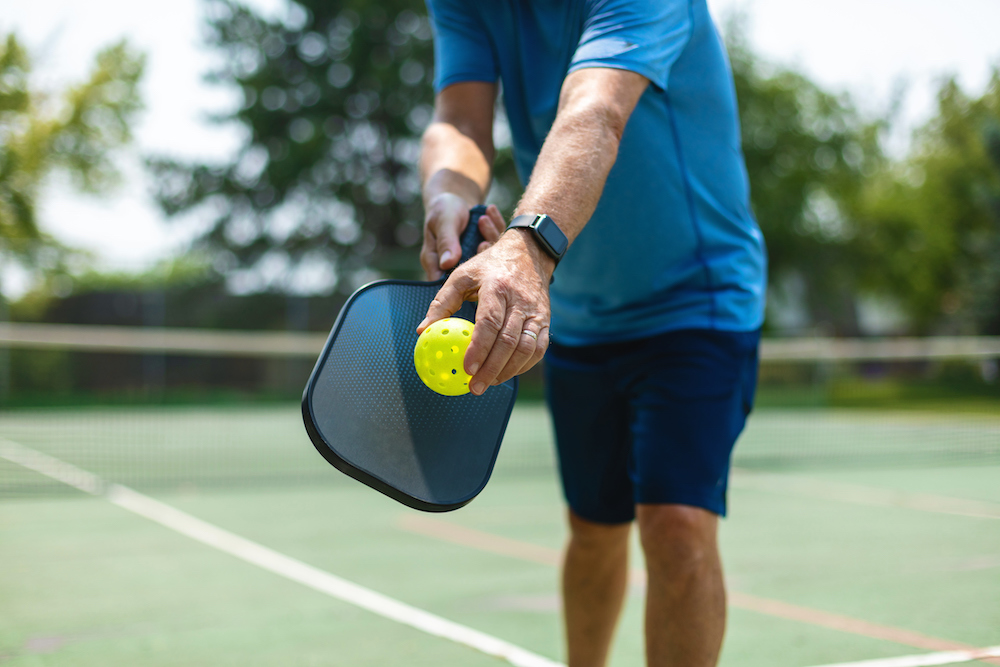Your members are the lifeblood of your club.
They’re your engine, and you can’t grow without them. But how do you convince them to keep coming back?
Pickleball may be your answer.
Dubbed one of the country’s fastest growing sports, people of all ages are finding a new favorite sport in pickleball. Its unique appeal to both new and experienced players is driving its rapid rise in popularity, and it can power your club’s growth too. Here are three ways you can use pickleball to boost your club’s retention rates.
Improve Your Club’s Social Experience
No one wants to spend time where they feel unwelcomed. The relationships between your members directly impact their experience, with 67% of members citing “the energy of the group” as a key driver of satisfaction according to the Les Mills 2021 Global Fitness Report.
If you want members to stick around, it’s important to create opportunities for building social connections.
A pickleball court is a great place to facilitate relationships between your members. Its low impact nature makes it welcoming for players of all experience levels. Pickleball’s small, badminton-size court also keeps players close together, giving them an opportunity to chat while they play. Combined with its easy-to-learn rules, pickleball is the perfect sport to bring together members from all backgrounds.
When your club becomes a space for members to exercise and build relationships at the same time, they’ll stick around longer.
Keep Your Club Fresh and Exciting
Every solid retention strategy needs ways to keep your club fresh and eye-catching for current members. Offering new classes that align with what your members are excited about keeps them from getting bored and letting their memberships lapse.
Analyzing your club’s performance analytics and watching industry trends can help you stay up to date on member preferences.
In a worldwide survey of 2022 fitness trends conducted by the American College of Sports Medicine, members ranked “outdoor activities” as their third most desired option. “Group activities” also made the list’s top 20 trends, showing that members are looking for ways to exercise outdoors with friends.
If you see similar trends among your members, you can meet their needs by offering outdoor pickleball courts. Pickleball can be played in either doubles or singles, and an outdoor court gives your members the space to play together while enjoying the sun. Whether you’re converting old tennis courts or creating new pickleball spaces, embracing the sport can help you create a more exciting member experience.
Boost Accountability and Motivation
Committing to improving your health is rewarding, but it’s also hard work. Members that struggle with accountability may have a hard time developing a consistent exercise schedule. Creating a welcoming space that builds motivation can encourage members to stick with it.
Offering group activities is a great way to facilitate accountability for your members.
According to a recent Nielsen Study, more than 85% of class members visit their facility twice a week specifically to engage in group classes. The camaraderie members develop in group classes helps them hold each other accountable, and offering pickleball is one way you can build those connections at your club.
One of the drivers behind pickleball’s success is its fun group environment. Its approachability helps players focus on each other rather than the rules, it’s easy to strike up a conversation on the small court. As players build social connections with each other on the court, they’ll feel more motivated to return.
You want to help your members reach their health goals, and to do that you need them to keep coming back. Adding pickleball to your club can create a welcoming environment that keeps your members motivated and engaged. Stay tuned for the next part of our series where we’ll look at how you can wow your new members with your court reservation system.
Interested in learning more about how Club Automation can power pickleball at your club? Get a demo today.



